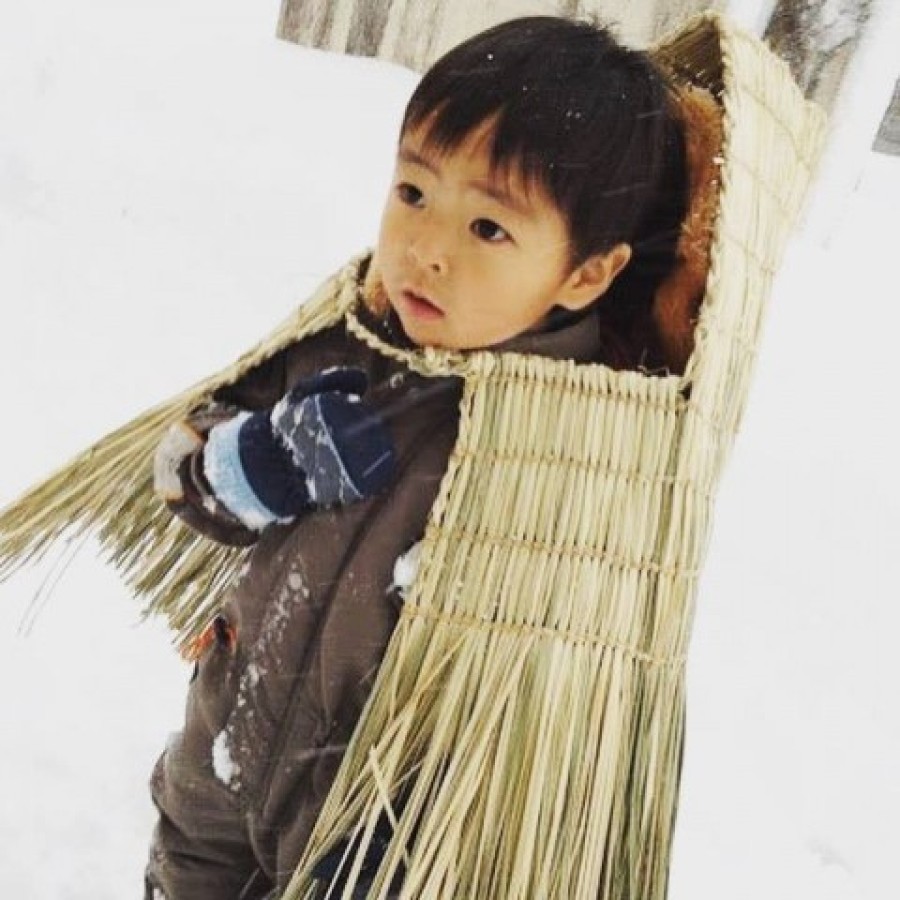Snow has finally started to fall in Nagaoka City.
Happy New Year to everyone.
This is sometimes a good thing for a snow-free New Year's Eve and New Year's Day.
Although there is a little less this year, winter in Nagaoka is still strongly associated with deep snow.
Looking at old documents from the Yamakoshi Tanamihara area, where the snow is particularly deep in Nagaoka, there were records of snow accumulations exceeding 5 m in February in both 1968, 1974 and 1956. (The famous Sanroku heavy snowfall was around 4m90.) It is hard to imagine what life would be like with a snowfall of 5m, but there is no doubt that people would be forced to live in harsh conditions.
It is not that extreme, but still Nagaoka has always been a snow country.
Many people say they wish they didn't have to live in such an area, but it is surprising that Niigata Prefecture was the most populated area in Japan during the Meiji Era (1868-1912). Furthermore, the fact that Jomon pottery has been excavated in the area means that this way of life has been going on for thousands of years.
How did such a town with the world's heaviest snowfall ever come to be inhabited and lived in? I did a little research of my own to find out why Nagaoka, the snowiest little city in the world, was born.

[Benefits of snow (1) Environment.
- Snow acts as a kind of dam, and even when precipitation is heavy, it does not wash away all at once like a flood, but slowly turns into water that slowly moistens satoyama and fields.
- The air is clean because the snow swallows up all the dust in the air and drops it to the earth.
- Melting snow is filtered by the earth and flows through it, becoming the water of life.
[Benefits of snow (ii) Food culture.
- The snow covering the soil in winter gave rise to the wisdom of preserving crops.
- Everyone knows that going to someone's house in the snow is risking one's life, so a culture of treating winter guests with tara-fu treats so that they don't die was born.
- The quality of food from spring to autumn is much higher because the soil is forced to rest.
- By placing the food in a snow-nio (snow chamber), which preserves the food with snow, the food was able to enjoy the taste of maturity without being exposed to it.
- In winter, temperatures were stable and low, so micro-organisms could be controlled, and it was easier to produce good sake because there was less damage to breweries and other prefectures.
[Benefits of snow (iii) Living.
- The common difficulty of snow has forced community bonds to be heightened.
- If you only shovel snow in front of your own house, you won't be able to make a path. That's why we work together to shovel snow.
- →When someone gives way, they say, "Oh, thank you very much" and a drink begins.
- → Become the country's largest consumer of sake.
- → Evidence of a culture of mutual help and labour.
Such as.
After reading a lot of literature and asking people, the mystery was gradually solved.
This town is actually in a world of trouble, isn't it? And.
In the first place, Japan is the only country in the world where it snows this much, regardless of latitude, and even in Japan, depending on where the mountains stand, it doesn't snow at all in the neighbourhood, so Nagaoka is a small city with miraculous snowfall.
You can't find a heavy snowfall area with this many people living in it, anywhere in the world, can you?
Next time someone asks you, "Why do you live in such a snowy country?" If someone asks you why you live in such a snowy country, say this.
'Don't be jealous, try living there. You'll have the most annoying and interesting life."
I am a little proud of my town and will enjoy 2016.
It is good to forcefully think through the community sometimes.
advertisement








